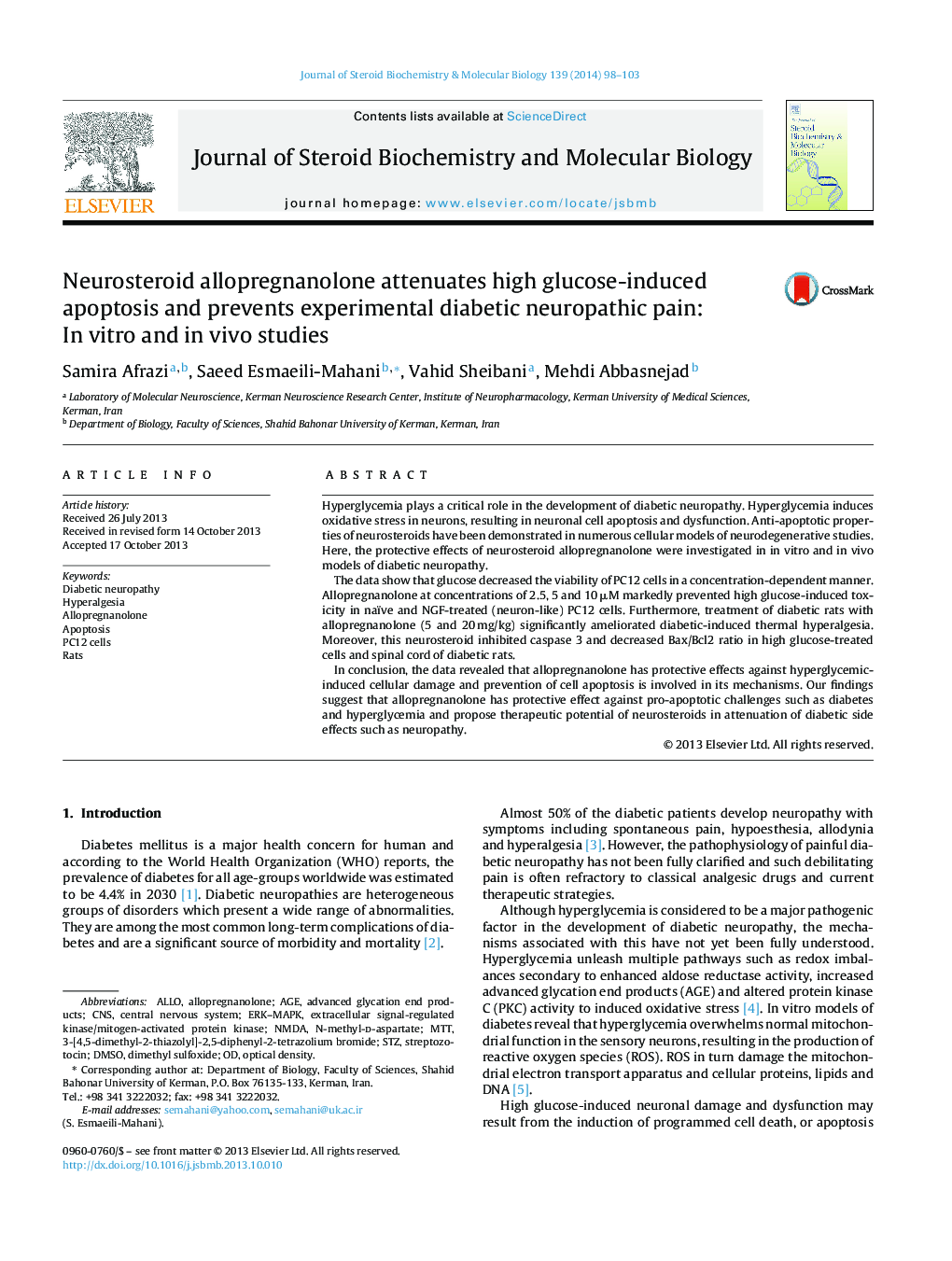| Article ID | Journal | Published Year | Pages | File Type |
|---|---|---|---|---|
| 1991545 | The Journal of Steroid Biochemistry and Molecular Biology | 2014 | 6 Pages |
•The pathophysiology of painful diabetic neuropathy has not been fully clarified.•Anti-apoptotic properties of neurosteroids have been demonstrated.•Allopregnanolone prevented toxicity in in vitro and in vivo models of diabetic neuropathy.•Prevention of cell apoptosis is involved in the mechanism of drug.
Hyperglycemia plays a critical role in the development of diabetic neuropathy. Hyperglycemia induces oxidative stress in neurons, resulting in neuronal cell apoptosis and dysfunction. Anti-apoptotic properties of neurosteroids have been demonstrated in numerous cellular models of neurodegenerative studies. Here, the protective effects of neurosteroid allopregnanolone were investigated in in vitro and in vivo models of diabetic neuropathy.The data show that glucose decreased the viability of PC12 cells in a concentration-dependent manner. Allopregnanolone at concentrations of 2.5, 5 and 10 μM markedly prevented high glucose-induced toxicity in naïve and NGF-treated (neuron-like) PC12 cells. Furthermore, treatment of diabetic rats with allopregnanolone (5 and 20 mg/kg) significantly ameliorated diabetic-induced thermal hyperalgesia. Moreover, this neurosteroid inhibited caspase 3 and decreased Bax/Bcl2 ratio in high glucose-treated cells and spinal cord of diabetic rats.In conclusion, the data revealed that allopregnanolone has protective effects against hyperglycemic-induced cellular damage and prevention of cell apoptosis is involved in its mechanisms. Our findings suggest that allopregnanolone has protective effect against pro-apoptotic challenges such as diabetes and hyperglycemia and propose therapeutic potential of neurosteroids in attenuation of diabetic side effects such as neuropathy.
